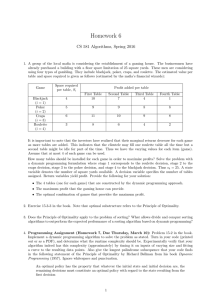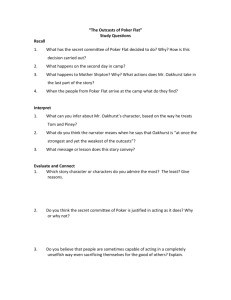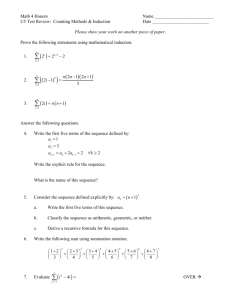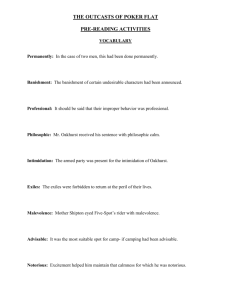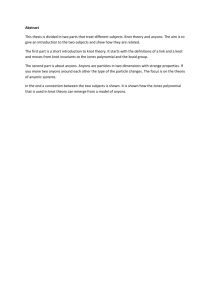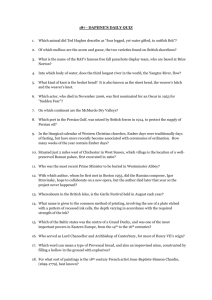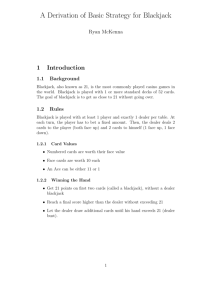107project5
advertisement
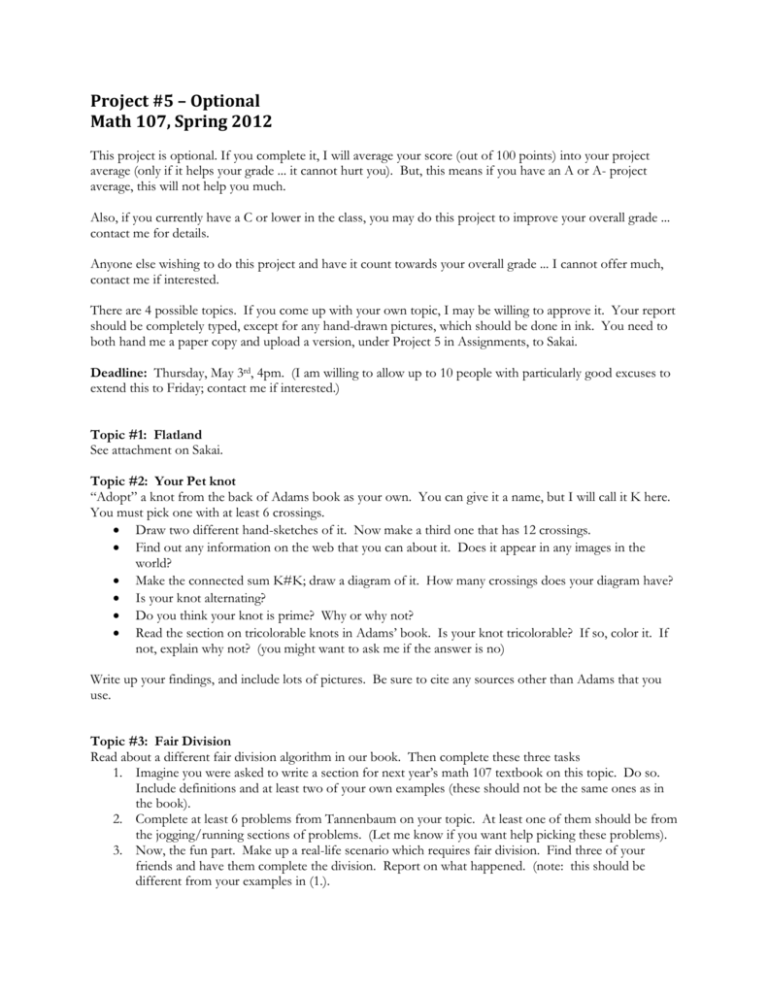
Project #5 – Optional Math 107, Spring 2012 This project is optional. If you complete it, I will average your score (out of 100 points) into your project average (only if it helps your grade ... it cannot hurt you). But, this means if you have an A or A- project average, this will not help you much. Also, if you currently have a C or lower in the class, you may do this project to improve your overall grade ... contact me for details. Anyone else wishing to do this project and have it count towards your overall grade ... I cannot offer much, contact me if interested. There are 4 possible topics. If you come up with your own topic, I may be willing to approve it. Your report should be completely typed, except for any hand-drawn pictures, which should be done in ink. You need to both hand me a paper copy and upload a version, under Project 5 in Assignments, to Sakai. Deadline: Thursday, May 3rd, 4pm. (I am willing to allow up to 10 people with particularly good excuses to extend this to Friday; contact me if interested.) Topic #1: Flatland See attachment on Sakai. Topic #2: Your Pet knot “Adopt” a knot from the back of Adams book as your own. You can give it a name, but I will call it K here. You must pick one with at least 6 crossings. Draw two different hand-sketches of it. Now make a third one that has 12 crossings. Find out any information on the web that you can about it. Does it appear in any images in the world? Make the connected sum K#K; draw a diagram of it. How many crossings does your diagram have? Is your knot alternating? Do you think your knot is prime? Why or why not? Read the section on tricolorable knots in Adams’ book. Is your knot tricolorable? If so, color it. If not, explain why not? (you might want to ask me if the answer is no) Write up your findings, and include lots of pictures. Be sure to cite any sources other than Adams that you use. Topic #3: Fair Division Read about a different fair division algorithm in our book. Then complete these three tasks 1. Imagine you were asked to write a section for next year’s math 107 textbook on this topic. Do so. Include definitions and at least two of your own examples (these should not be the same ones as in the book). 2. Complete at least 6 problems from Tannenbaum on your topic. At least one of them should be from the jogging/running sections of problems. (Let me know if you want help picking these problems). 3. Now, the fun part. Make up a real-life scenario which requires fair division. Find three of your friends and have them complete the division. Report on what happened. (note: this should be different from your examples in (1.). Topic #4: Probability Learn a lot about the probability behind blackjack and/or five-card (stud) poker. For blackjack: Your project should explain how the game is played What is the probability, in a single deck of cards, of drawing a blackjack? What about if there are 6 decks (as in most casinos)? Let’s say you have drawn 20. What is the dealer’s probability of beating you with two cards? Repeat for if you draw 19, 18, and 17. (Of course the dealer has a higher probability of winning than that, as he can draw more than 2 cards if he is below you.) [for an extra good project] Explain the rules on splitting pairs of cards. Then, explain why it is in your best interest to split 8’s and aces. To go even further, should you split anything else? For poker: This is easiest if you assume that each player is dealt 5 cards, with no replacement. If you want to look at a harder version of poker instead, that’s fine … but let me know in advance. Compute the probability of getting the following hands: Four of a kind Full house Royal flush Flush Three of a kind (but not a full house) Two pairs (but nothing better) One pair Use this to justify why three of a kind beats two pairs. Explain all of your answers. Warning: it is easy to miscalculate. Ask me or the TA’s if you have questions. (If you do miscalculate multiple probabilities, you will not earn a good grade.) To complete this project, do (1) the first 3-4 blackjack tasks, (2) all poker tasks, (3) 2 blackjack tasks and at least 4 poker calculations.
